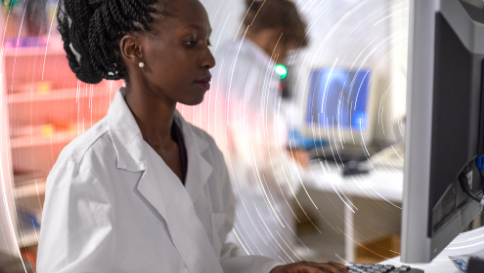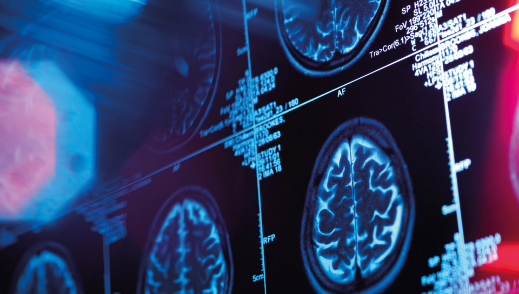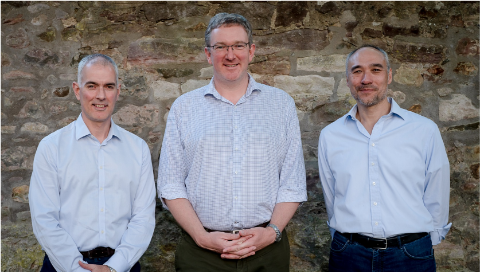Blackford Analysis
The use of imaging – and particularly imaging AI – for diagnosis and management of COVID-19 patients is the subject of significant controversy. That said, we have received requests from practitioners for imaging tools that they believe could help, particularly for the management of patients. This article summarises the requests and feedback we’ve had from our customers and offers guidance to developers who wish to adapt existing products or develop new AI applications, and how Blackford can help.
A Call to Arms: A platform approach, such as our own Blackford Platform, is the easiest and fastest way to deploy AI applications without distracting over-stretched healthcare facilities. We’re happy to fast-track the hosting of any COVID-19 related products our customers request, and where a supplier doesn’t charge for their product we won’t either. We’re in this together, and Blackford is keen to get products that help clinicians and patients in use as rapidly, and widely, as possible. Contact us through your normal support channel or through our website if you have an application you’d like to request for your facility, and we’ll work on delivering it into your environment.Part 1: Where is the Clinical Need?
Where could radiology AI have use in the COVID-19 pandemic? We’ve talked to various clinical customers and contacts in Italy, the UK and the US to understand where radiology practitioners believe AI might be able to help. In the most part our information is from radiologists who are on the front line, either weathering the storm or preparing for its imminent arrival, although we have also taken into account secondary sources (listed at the end of this article). There are two modalities in widespread use with the clinicians we’ve spoken to – Chest X-ray (CXR) and Computed Tomography (CT). Typically CXR is being used in combination with slower RT-PCR tests at the initial stage of the patient journey to help determine who should be isolated, whilst CT is being used for quantification of disease, incorporated into the wider clinical condition and patient history in order to determine care pathway, as well as in the evaluation of challenging cases. To avoid extensive de-contamination procedures, COVID-19 patients are imaged in a dedicated “hot” CT suite, and CXRs are often acquired using a portable, more easily decontaminated, device. After an initial CT, ongoing management of COVID-19 patients is more commonly by CXR – the modality can be brought to the bedside rather than requiring 4-5 staff to transfer the patient to the CT suite and the patient is subject to a lower radiative dose. It is critically important at this time to avoid AI for AI’s sake. Products need to either increase the efficiency of imaging or add value (for example quantification or triage) that a radiologist wouldn’t otherwise be able to deliver. While generation of radiomics data is likely to be extremely useful for longer term research, it is unlikely to impact the care of current patients and could be acquired from archive data when the crisis has slowed. Opportunities for AI in COVID-19 CT:

Part 2: Practicalities of building a product and scaling deployments
Where do we get data to train models? All AI algorithms require many sample images with known diagnoses to train and tune their performance – typically around a thousand samples for a new application. Equally important are cases that are negative, and cases with diseases that might be confused with the target. The underlying image processing pipeline could be developed from scratch or adapted from existing codes used in the lung, but in either case data showing patients with COVID-19 is required for development and validation. The last thing an overwhelmed radiology department needs right now is to be fielding demands for data and associated reviews through their IRB, so data is likely to be patchy. Establishing a common archive of de-identified data (images, reports, outcomes and history) that can be shared between all researchers is key to reduce the load on the healthcare system. Some organisations and vendors have established or are building their own datasets, and various efforts are underway to collect such data: • British Society of Thoracic Imagers • University of Montreal • RSNA • Netherlands Cancer Institute Imaging COVID-19 AI • Icometrix • Aidence The focus for these efforts should be on collaboration and aggregation wherever possible/practical. Given the prevailing global emergency, some sources have indicated that privacy restrictions can be relaxed. In Europe, Article 9(i) of the GDPR might allow patient data to be used without explicit consent. In the US, HIPAA has indicated that previously unapproved mechanisms for communications are permitted to provide telemedicine – there has been speculation this could allow for cloud processing of data beyond a BAA but this seems unlikely without more specific guidance. Whatever your regulatory take on these relaxations, de-identification to recognised standards (eg Safe Harbor § 164.514(b)(2)) remains a sensible first step. Regulatory Approval Regulatory clearance for a new imaging tool typically takes 3-6 months, and rules on extending the use (or “off-label” use) of existing devices are complex. As such any new tool developed cannot be marketed and sold for clinical use – it would need to be used as a research tool, with the radiologist being 100% responsible for its use in a research setting. Another option would be a regulatory cleared product that has an intended use of quantifying lung function without mention of a specific disease. The determination that it is useful in the management of COVID-19 patients is then a clinical choice. While there is a wealth of advice on off-label use available from the FDA, a succinct, clear statement from regulatory bodies on how these rules should be interpreted in the current crisis would be helpful. Real World Deployment The radiologists and IT teams that we’ve talked to are facing significant staff absences and as such any deployment must be as simple as possible. That means working within the existing tools at the site – which for radiologist workflow means the worklist, the PACS and the reporting system. It also means minimising the number of blockers that a site has to work through to allow use of your product – if you need the IT security committee’s approval to transfer data to the cloud, or an additional Business Associate Agreement to be in place, or a new master services agreement, it’s likely that the process will be slowed to a pace that means the pandemic will have passed before your product is in use. Clinicians are uncertain of which tools will end up being useful and which are not – they might be able to assemble resource to deliver one integration, but certainly not several. We’ve had several sites reach out to us to solve this problem using a platform approach. Checklist for fast, efficient deployment For fast, efficient deployment a product should:- Exist within the clinical workflow already in use – DICOM in, DICOM out, results provided in the standard PACS viewer and reported through the standard reporting system. Avoid any need for a separate viewer, even if it is a zero-download option – you’re asking for additional time from the IT and PACS Admin, and you’re asking the radiologist to change context unnecessarily and learn a new interface. The lowest common denominator for all PACS is a DICOM secondary capture. For worklist and reporting, a DICOM structured report. Any movement beyond those two standards limits the number of PACS vendors your solution will be compatible with.
- Run on premise in a “vanilla” environment, ideally a virtual machine or container in a datacentre. Very few non-academic sites have novel processing such as GPUs accessible, and although such resources can be placed in the cloud, this adds the legal complexity of negotiating transfer of PHI offsite (or at least, IT’s assessment and approval of your de-identification process). If a GPU is essential, consider working with a partner who has an established de-identification process in place with their customers, and can handle the hosting of your solution in their own cloud.
- Not require any licence or transfer of ownership of patient data. While data may be needed to train and develop algorithms, for the majority of sites that will require lengthy discussions, IRB approval and other considerations that will just slow you down. Tempting as a data accumulation exercise is, if you wish to deploy widely and quickly for maximum impact avoid tying in data collection. A further consideration is that your customer (for example a radiology group) may not even be able to give you access if that data belongs to the hospital or health system they are reading for.
- Be deployed through an existing commercial relationship, with appropriate IT, BAA and data access in place. Deployment through a channel that has an existing relationship with a customer smooths and accelerates every step of the process. In our experience, even outside of a global pandemic, “cold” deployments take 6-18 months. Deploying through an established channel, that time is reduced to days/weeks.











